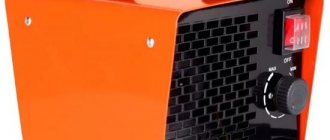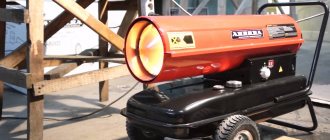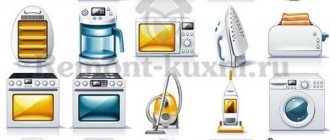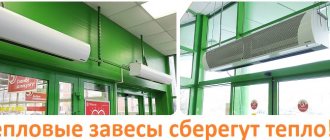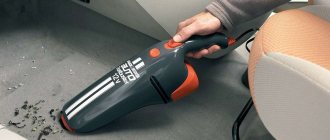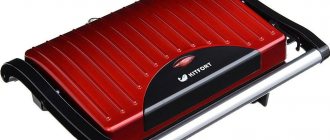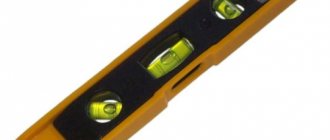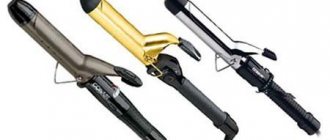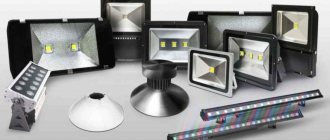Heat guns are an effective and cost-effective way to quickly warm up the air in residential and non-residential premises. They are suitable for heating a house, cottage, garage, or drying out a cellar. More powerful units are used in industrial warehouses and in agriculture.
To choose the right heater that can maintain a comfortable temperature in the room, you need to take into account many factors: insulation, area, ability to connect to a particular power source. To help you make the right choice, we have written a detailed review of each type of heat gun.
Heat gun design
At its core, any gun is a fan heater. It just has larger dimensions and greater productivity. The basic design is also the same. There are four main parts here:
- body - all internal parts are hidden in it;
- fan - captures cold air and then disperses the already warm air around the room;
- heating element - it is located inside the housing and is responsible for heating the air masses;
- control unit - allows you to configure the unit.
Of course, this is a very simplified diagram. Depending on the type of device (more on this below), many other parts may be added here.
The main difference between guns and other types of heaters is their amazing heating capabilities. If you use a device with sufficient power, it will become warm within a few minutes. Moreover, a comfortable temperature will be throughout the room, and not just next to the source.
But such productivity requires certain sacrifices, namely the expenditure of resources. Whatever sample you buy, you will have to accept that it will use energy uneconomically.
The list of tasks that can be solved with the help of such products is quite wide. They are used for heating residential premises, production workshops, greenhouses, during construction, etc.
Features of the operation of infrared heat guns
The main difference between heat guns of this type is that they do not have fans. The work is carried out by a special mechanism that uses infrared radiation to heat the air, and then distributes it in the room.
Air heating occurs due to heat transfer. An infrared heat gun does not heat the entire room, but only a certain zone, which is especially useful during construction or finishing work. It is with the help of a heat gun of this type that you can dry floors or walls after plastering.
Types of devices
It is worth thinking carefully about which device is more convenient and profitable to install. Each case has its own nuances that cannot be ignored.
Please note that almost all of the devices listed below require electricity. It powers the fan, ignition and security systems. So in any case you will need an outlet or a battery.
Electrical
Electric guns are the most common option in domestic settings. This is explained by a number of advantages.
- Easy installation and transportation - to start using it, just connect the equipment to a power outlet.
- Safety – during operation there are no combustion products, almost no oxygen is burned and there is no fire.
- Compactness - compared to other varieties, such installations are small in size.
- Quiet operation - again, in comparison with others, they can be called quiet: only 35–55 dB.
- Continuous operation - they do not require refueling.
- Wide range of models - you can choose a copy for any purpose and area.
In fact, they have only one drawback - energy consumption. If you turn on the device constantly, you can literally go broke on your electricity bills.
The voltage in the network must also be taken into account. For powerful equipment, a standard 220 V network may not be enough and 380 V will be required.
Depending on the type of heating element, the properties change. Spirals made of high-resistance alloys heat up to 300-600 degrees and affect humidity. So it would be a good idea to use a humidifier at the same time.
Products with a ceramic heating element in the form of plates reach only 150 degrees. Therefore, they are considered less fire and traumatic. At the same time, they have a long service life and outperform spirals in terms of power output. But their cost is much higher.
Gas
Gas facilities are in second place in popularity. The structure of such devices is more complex. The gas enters the burner and heats the heat exchanger. An electric fan pumps air into the chamber, and it comes into contact with the hot walls of the heat exchanger and warms up. Then he goes back to the room.
This fuel costs less than electricity: operation will become more economical. The equipment is also characterized by increased productivity and successfully copes even with a huge area. However, there are additional complications here.
- The presence of gas and open flame makes operation potentially dangerous. Of course, the devices are equipped with various sensors and security systems, but they also malfunction.
- During operation, oxygen is burned, which means it is necessary to provide ventilation. You cannot stay in a closed space for a long time, otherwise you will feel unwell and tired.
Pay attention to the type of gas required for operation. There are two options available here:
- natural gas from a centralized pipeline;
- liquefied gas from a cylinder.
Diesel
The source of energy in such units is diesel fuel. Fuel is supplied to the tank, where it is ignited using piezo ignition. Two types of heating are possible.
- Direct - the flow passes directly through the combustion chamber. This ensures a higher outlet temperature and the desired effect is achieved faster. But combustion products formed during operation enter the room. Therefore, it is prohibited to use devices where people are present.
- Indirect - as a result of combustion, the walls of the chamber are heated, and from contact with them the air is heated. The exhaust gas leaves through the chimney, which will have to be organized specifically for this. Such equipment is safe, but its performance is lower.
It is very important that the object is equipped with a timer and camera control function. Otherwise, the operating device must not be left unattended.
Good models are equipped with a fuel filter. This prevents nozzle clogging and prolongs service life.
Such installations are often used for large areas, since the cost of operation is quite acceptable. However, it is necessary to monitor the fuel level in the car and top it up on time.
Multi-fuel
The characteristics are similar to diesel devices. They also have direct and indirect heating and the same features.
The main difference is only in the energy source. There are units that run on gas, kerosene and waste oil.
However, if you think that the specimens fueled by waste are omnivorous, then you are mistaken. Only the fuel specified in the description is suitable. This is usually engine, hydraulic or transmission oil. But at the same time, fuel must be cleaned of mechanical impurities and water.
Infrared
A separate category consists of powerful infrared heaters. I'll tell you how these devices work. Typically, the devices heat the air accelerated by a fan. The design of infrared fans does not include a fan.
Heating occurs using infrared rays, which warm objects encountered along the way. First, the walls, floor and furniture become warm, and then they give off their heat into the space. The atmosphere changes more slowly, but objects (and people) located in the radiation zone feel the heat immediately.
The fuel here is gasoline or kerosene, which, when burned, heats up heating elements that emit infrared rays. There are also electric versions. Each option is characterized by all the advantages and disadvantages of the source used.
Design and general characteristics
A diesel heat gun runs on combustible fuel - gasoline, diesel, diesel fuel, kerosene, etc., which makes its use on a regular basis costly. Some models consume less fuel without significant losses in performance, but they are also more expensive (for example, the Master diesel heat gun). Heat guns are divided into two types depending on the presence of a smoke exhaust system. Some models may require a power connection to operate, as... this is necessary for the operation of the fan and chimney (if the latter is present). Main components of a diesel gun:
- Burner. Releases a jet of flame that heats the air.
- The combustion chamber. Here the air is heated to high temperatures, heating the walls of the chamber.
- Motor. Required for the operation of some mechanisms. It runs either on fuel or on mains power.
- Nozzle for hot air outlet.
- Fan. Needed to create air circulation near the combustion chamber.
- Fuel pump (all liquid fuel devices have it in their design).
- Fuel tank.
- Fuel valve. Often works from the network.
Features to look for when purchasing:
- Heating power. The recommended value in kW is from 3 for home use, from 20 for large premises.
- Heating method.
- Air flow speed.
- Recommended fuel for use.
- Maximum heating area.
- Fuel consumption coefficient (kilogram of fuel per hour).
- Type of food. In most cases, it is recommended to choose 220 V.
Diesel heating guns have several significant differences from similar heat guns, the two most important of which are that they require flammable fuel to operate and there are strong differences in design, which can make repairs more or less expensive. Let's consider the advantages and disadvantages of a diesel heat gun for the average consumer.
Advantages
- Combustible heat guns are very productive. Warming up occurs quickly, after which the device releases warm air.
- Electricity consumption is kept to a minimum (in some models it is not required at all).
- Most models are compact, which allows them to be quickly folded and unfolded and transported.
- Easy to use. You just need to fill in the fuel and select the operating mode.
- Some models are equipped with a rheostat, which allows you to automatically stop the heat gun when the desired temperature is reached.
- Medium-sized rooms warm up almost instantly, larger ones within a few minutes.
- The gun can operate for a long time without refueling.
- During operation, the device does not heat above 35 degrees, which prevents overheating and undesirable fire.
- A heat gun is not dangerous to people if used correctly and if there is ventilation or a chimney.
We advise you to study - How to choose a laser level or level - characteristics, types and selection criteria
Flaws
- Diesel heat guns make too much noise when operating. However, in some places the operating noise is not so noticeable.
- Most modern heat gun models do not have a backup battery to power the motor and fan, so for normal and safe operation the device must be connected to an electrical outlet.
- It is necessary to control the amount of fuel in the tank and refuel on time.
- It is not recommended to come close to the hot air outlet, because Some models are unsafe and you can get a slight burn.
- High cost of maintenance, because it is necessary to regularly purchase fuel and lubricate some parts.
- Purchasing and repairing diesel heat guns is expensive.
Power
Its value affects the area that the equipment can handle and the heating rate.
Power value
It is indicated in all units, but we are not interested in power consumption, but in thermal power. It means the amount of heat that the device is capable of transmitting per unit of time.
- Electric ones are characterized by values from 1 to 60 kW. Moreover, devices up to 5 kW are classified as household, and everything higher is classified as industrial.
- Gas ones are capable of producing from 1 to 300 kW.
- Diesel and multi-fuel engines produce from 10 to 650 kW. For indirect heating, the parameter does not exceed 100 kW.
- Infrared ones show indicators of 1.5-50 kW.
The general recommendation for determining power is that per 10 sq. m requires 1-1.3 kW.
But such a calculation does not take into account some features that significantly affect the final result.
- Volume of the room - for calculations, the height of the ceilings is no less important than the area. This is explained by the fact that warm air rises and cold air sinks. This means that in order to create a comfortable atmosphere, you will have to warm up the entire volume.
- The temperature outside - it’s obvious here: the colder it is outside, the more productivity will be required.
- Desired temperature - the minimum for residential buildings is 18 degrees, and for warehouses 12 degrees is sufficient.
- Thermal insulation - the higher the quality of the heat-insulating elements (walls, roof, floor, windows), the less energy is spent on heating.
Formula
Armed with theoretical knowledge, you can proceed directly to the calculation. There is a formula for this:
Q = K x V x △T, where:
Q – required thermal power, kcal/hour;
K – heat dissipation coefficient;
V – room volume, cubic meters. m;
△T – the difference between the desired temperature and the outside temperature.
Here it is assumed that the gun will be the only source of heating. Otherwise, it is necessary to take into account the available capacities.
Let's talk in more detail about how to calculate each of the indicators.
The heat dissipation coefficient is a characteristic of thermal insulation. It happens:
- 0.6-1.0 – good thermal insulation (double brick, thick base, insulated roof, double glazing of windows);
- 1.0-2.0 – average (double walls, regular roof, high-quality windows);
- 2.0-3.0 – poor (one layer of masonry, single frames);
- 3.0-4.0 – lack of thermal insulation (open and semi-open places, simple buildings like a barn or hangar).
The volume of a room is calculated simply: you just need to multiply the area and the height of the ceiling.
To calculate △T, it is necessary to subtract the average temperature in the yard during the coldest period from the desired indicator inside the building.
Please note that the power calculated using this formula is expressed in kcal/hour. To convert it to kW, you must divide the resulting number by 860. As a result of this action, you will get the required kW, since 1 kW = 860 kcal/hour.
Calculation example
There is a country house with one room of 25 sq. m. m and a ceiling height of 2.7 m. It has high-quality thermal insulation (K = 0.8) and the outside temperature does not drop below -25 degrees. Inside you need to reach a value of at least 20 degrees Celsius.
V = 25 x 2.7 = 67.5 cu. m;
△T = 20 - (-25) = 45;
Q = 0.8 x 67.5 x 45 = 2430 kcal/hour = 2430 / 860 = 2.8 kW.
In the case of a complex building configuration or a huge area, it is better to buy several guns of small capacity. They will warm up the apartment faster than one powerful one.
Varieties
An important fact is that thermal energy is generated by converting various energy carriers into heat.
As for thermal devices of this type, they are usually divided into types depending on what type of energy carrier is chosen for their processing into heat air flow.
On the modern heating equipment market, heat guns are represented by the following types.
.
In units of this line, the heating element can be presented in the form of a spiral made of refractory metals or a sealed tube called a heating element.
On the modern heating equipment market, electric heat guns are represented by a wide range of models, the power of which varies from 1.5 kW to 50 kW, and models up to 5 kW can operate from a regular household electrical network.
In other words, electric heat guns have found application in almost all spheres of human activity, from heating small private houses to drying large warehouses and industrial premises.
.
The operating principle of units of this type is that diesel fuel energy is used to produce warm air flow.
Diesel heat guns are divided into two main types:
- a direct heating heat gun emits exhaust gases, so it is recommended to use it only in open spaces;
- An indirect heating heat gun operates without polluting the environment, as a result of which it can be used for heating and drying rooms for various purposes.
We advise you to study - Rating of rotary hammers by reliability - comparison of the best models for home and professional use
.
To heat the premises, natural gas is used, which burns out completely in the unit without polluting the environment.
A distinctive feature of units of this type is that the efficiency of gas heat guns is almost 100%.
Gas heat guns can be used quite effectively in crowded places (subways, passages, train stations, etc.), and they are also an excellent heating option in greenhouses.
Water heat guns.
The main feature of units of this type is that the heating element is presented in the form of a heat exchanger through which hot water passes.
Water heat guns can also be connected to an existing heating system, which in turn will significantly increase the efficiency of heating the room.
Infrared heat guns.
The unique design of heat guns of this type is that they do not have a forcing fan heater. In other words, infrared radiation contributes to the formation of heat flow.
When using infrared heat guns, it is worth considering the fact that they specifically heat individual areas of the room, so they can be used effectively when drying plaster or when installing a stretch ceiling.
Multi-fuel heat guns.
In such units, air heat flow occurs due to the efficient combustion of waste oil.
The operating principle of multi-fuel heat guns is that, using a special pump system, waste oil is transferred to a special combustion chamber.
It is worth noting the fact that the efficiency of these units is close to 100%.
Other characteristics
We have analyzed the main parameters: the rest do not seem so important. But if you want to approach your choice with full responsibility, then study them too.
Air flow
Shows how much air mass the device creates per hour. This characterizes the heating speed and depends on the fan.
Bandwidth should be looked at in conjunction with power. If the flow rate is high and the heating capacity is low, the outlet stream will be barely warm. There is no sense in such equipment.
This option is not available for infrared models.
Dimensions
Compact samples have low productivity. Be prepared to deal with bulkiness if you require a high-power unit. In general, weight ranges from 1 to 1500 kg.
Electric guns weigh 3-70 kg, and gas guns from 3 to 700 kg. The range of mass of liquid fuel specimens is enormous: from a modest 1 kg to 1.5 tons.
Shape and material
The body can be in the shape of a pipe or a rectangle. The first one resembles a real military weapon with its elongated cylindrical shape. It is capable of producing higher temperatures than its competitor. At the same time, rectangular devices provide more uniform heat distribution due to the increased dispersion zone.
All structures are made of metal. This is due to the danger of melting the plastic. In household models there are plastic inserts, for example, handles and switches. As a rule, they are hidden in such a way as to prevent them from becoming overheated.
Functions
Heat guns do not differ in their variety of functions. These are already quite expensive products and there is no point in complicating them with additional bells and whistles.
Increased attention is paid to ensuring safety. The devices are equipped with a switch-off option when tipping over. Liquid fuel and gas facilities are equipped with flame control: if it goes out, the fuel supply is stopped.
The thermostat helps control the heating level. As soon as the room temperature reaches the set value, the element stops working. Also, shutdown occurs if internal parts reach critical values. If you plan to leave the device unattended, then definitely buy a device with a thermostat.
Ventilation without heating allows you to mix the air in the room. And in hot weather, the device will replace your fan.
What are gas heat guns?
A gas heat gun is used in approximately the same place and for the same purpose as a water heat gun - heating greenhouses and greenhouses in rural areas. This type of heat gun requires gas to operate, and the devices themselves can be mobile or stationary. Mobile heat guns use propane or butane cylinders, while stationary ones are connected to a gas main.
The efficiency of gas heat guns is comparable to water models.
Gas heat guns differ in the following:
- the air pumped into the gun by a fan is heated by the burner, after which it is released into the room, ensuring uniform heating;
- piezo ignition;
- 100% efficiency with a performance of no more than 140 kW;
- electricity is spent only on piezo ignition and fan operation, which indicates economical consumption - no more than 500 W;
- thermostat.
Compared to electric ones, gas heat guns are not as compact, but they do not require a powerful electrical network, and at the same time they are more economical. The maximum power of guns of this type is 140 kW. If you need to heat a room for a long time, then a gas heat gun is the best choice.
One of the key parameters when choosing a heat gun is its fuel consumption. Different gas models have different power, from 15 to 140 kW, respectively, and fuel consumption will be different - from 0.8 to 5.8 kg/h.
In order to connect a heat gun of this type to the gas main, you will need permission from the relevant authorities. But such permission is not needed if the gun is connected to a gas cylinder. However, a heat gun connected to a cylinder will consume an order of magnitude more fuel than one connected to the main line.
In order not to pose a threat to human health, rooms where a gas heat gun operates for a long time must be equipped with ventilation and regularly ventilated. Otherwise, it is dangerous to be in such rooms, since this type of heat gun burns oxygen during its operation. There is no need to worry about profitability, the efficiency of gas heat guns is very high (close to 100%), so small heat losses from ventilation will not lead to ruin.
Another factor influencing the safety of a gas heat gun is the ability to automatically control flame and overheating. When choosing models, preference should be given to those that have the above functions.
In addition to the above-mentioned advantages of gas models of heat guns: cost-effectiveness, simplicity and efficiency, they have another undeniable advantage - price. Gas heat guns are cheaper than electric or diesel counterparts.
Which heat gun to choose
The heater is selected depending on the location and duration of intended use.
For a house or apartment, an electric unit would be the best option. They come in low capacity, are inexpensive and do not require special installation and use conditions.
It is also advisable to install an electric sample at the dacha, even despite the energy costs. You can consider an infrared device. Others will not be able to provide the required level of security.
For a garage that does not need to be heated continuously and is located there for more than a few hours, electric appliances would be appropriate. Moreover, the box area is usually small, so a low-power (up to 2500 W) sample will suffice.
Here are some successful examples of household devices:
- Proffi PH9400 for 1,990 rubles.
- DeLonghi HFX30C18.AG for RUB 3,190.
- Resanta TEP-3000K for 2,300 rubles;
- Ballu BHP-P-3 for 3,400 rubles;
- Tropic TPC-2 for 4,300 rubles.
Heat guns are actively used during construction work.
For example, for drying plastered and painted walls. In this case, the optimal purchase would be an infrared heater, which will have a targeted effect on the surface. The equipment is also used in the installation of suspended ceilings. For living rooms up to 30 sq.m. m, electric models of 5-6 kW are suitable, and for commercial facilities 50-70 kW. But for spacious rooms over 30 square meters. A gas installation with fuel in a cylinder is suitable.
Five types of equipment suitable for construction:
- QUATTRO ELEMENTI QE-1500i for 3,250 rubles;
- Ballu BHP-P2-5 for 5,200 rubles;
- SPECIAL IGE-10 for 4,300 rubles;
- Parma TPG-30 for 7,400 rubles.
For a car repair shop, an ideal option would be a device that can be filled with used oil. It will allow you to dispose of residual liquids and reduce the cost of maintaining the stove to a minimum. But you will have to take care of quality ventilation. Diesel and gas versions can be used. Examples of such settings are:
- Master WA 33 C for 99,000 rubles;
- Ballu BHDP-20 for 16,300 rubles.
People do not stay in greenhouses all the time, so it is quite possible to get by with direct-heating diesel appliances.
If employees will be spending a lot of time there, it is better to install a gas or indirect diesel unit. It is advisable to install them under the ceiling to prevent the plants from drying out. Another popular category of buildings where guns are used are warehouses. Due to the huge areas and high energy costs, it is advisable to use gas and liquid fuel equipment here.
Check out the following suggestions for spaces of different sizes:
- PATRIOT GS 50 633445024 for 8,600 rubles;
- Kerona PRT-60K for 15,500 rubles;
- Oklima SG 420 A for 59,100 rubles;
- FRICO HDI235 for 462,000 rubles.
Features of operation of water heat guns
As the name suggests, the operation of this type of heat gun requires the presence of water, which is poured into a special heat exchanger. During operation of the gun, the water heats up, after which the resulting heat is transferred to the environment.
The main advantage of heat guns of this type is their economy and efficiency - very little electricity is spent. In principle, a water heat gun is very similar to a battery with a fan. The latter is needed to distribute heat in the room.
Water heat guns are used in greenhouses or warehouses: heating of these structures is not fast, and a gun of this type is an excellent energy saver.
